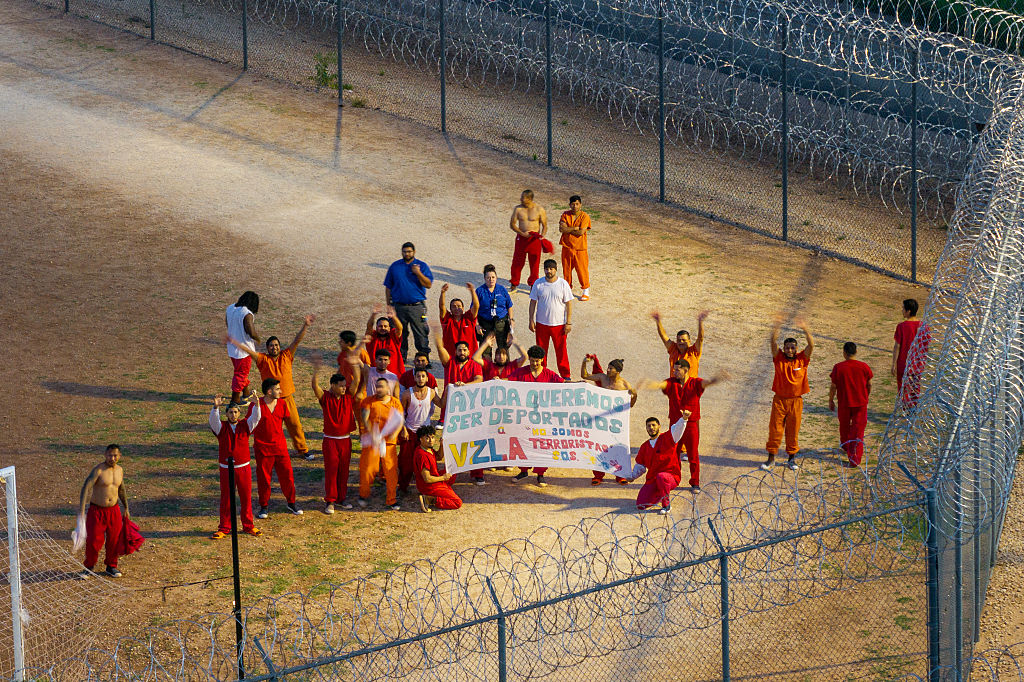Trump admin asks SCOTUS to deport 176 Venezuelan migrants

The Trump administration has formally asked the U.S. Supreme Court to lift its temporary block on deporting nearly 200 Venezuelan migrants detained in Texas. The administration argues the migrants — alleged members of the gang Tren de Aragua — pose serious safety risks while in U.S. custody.
The filing follows an April standoff at Bluebonnet Detention Facility, where 23 detainees reportedly barricaded themselves, blocked surveillance cameras and threatened U.S. Immigration and Customs Enforcement (ICE) staff with violence.
What happened inside the Texas detention center?
According to a sworn declaration by ICE’s Dallas Field Office director, the 23 migrants at Bluebonnet Detention Facility barricaded a housing unit for several hours on April 26. The group allegedly threatened to take hostages, damage property and harm federal officers.
ICE transferred the detainees to another facility, citing a credible threat to staff and other inmates. The solicitor general said this incident underscores the urgency of removing detainees under the Alien Enemies Act or other legal avenues.
Why is a centuries-old law being used to deport migrants?
President Donald Trump has invoked the 1798 Alien Enemies Act, a rarely used wartime law, to justify these deportations. Historically employed during declared wars, the law allows expedited removal of foreign nationals from hostile nations.
The administration argued that the gang-linked detainees present a national security threat and are too dangerous for long-term detention. This marks the fourth use of the statute in U.S. history and the first outside a formal war declaration.
What’s the legal status of the case?
The Supreme Court paused the deportations in April, requiring the government to allow migrants to challenge their removal. As of May 12, the administration claimed that no detainees had filed habeas petitions despite being notified of their rights. Solicitor General D. John Sauer asked the court to narrow its injunction or permit deportations under different immigration laws.
Unbiased. Straight Facts.TM
ICE has deported over 142,000 people this year, including nearly 40,000 Mexican nationals and thousands more from Central and South America.

Where are the deportees going?
Officials previously deported many Venezuelan migrants under the policy by flying them to El Salvador and holding them in facilities designated for high-risk individuals. Immigration advocates have raised concerns about conditions in those prisons. Meanwhile, deportation flights have surged. ICE has deported more than 142,000 people this year, including 38,000 Mexican nationals and thousands more from Central and South America, according to the Border Report.
What’s the broader immigration context?
This case comes as the Trump administration pushes for the largest mass deportation in U.S. history. Flights to Mexico have increased from one per week to nine. The U.S. is negotiating with countries like Panama, Honduras and Rwanda to take in deportees.
Critics said these efforts, including using the Alien Enemies Act, sideline due process and strain international partnerships.
What could the Supreme Court decide?
The justices are weighing whether emergency nationwide injunctions like the one halting these deportations are constitutionally appropriate. A related case involving birthright citizenship and executive authority limits may influence how courts can broadly block immigration actions. Legal experts said the ruling could redefine the balance of power between the executive branch and the judiciary in immigration enforcement.





